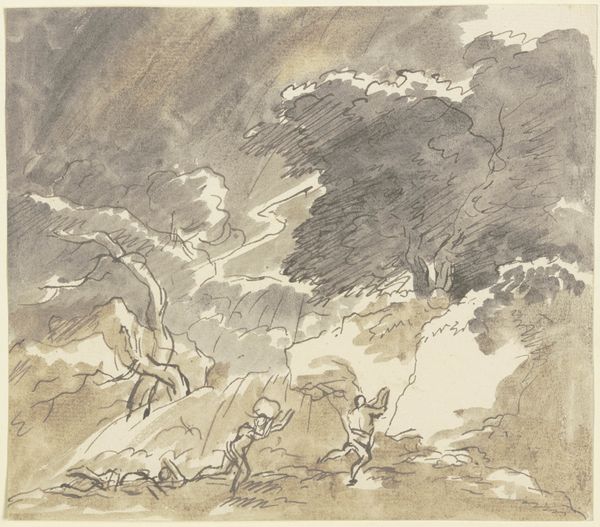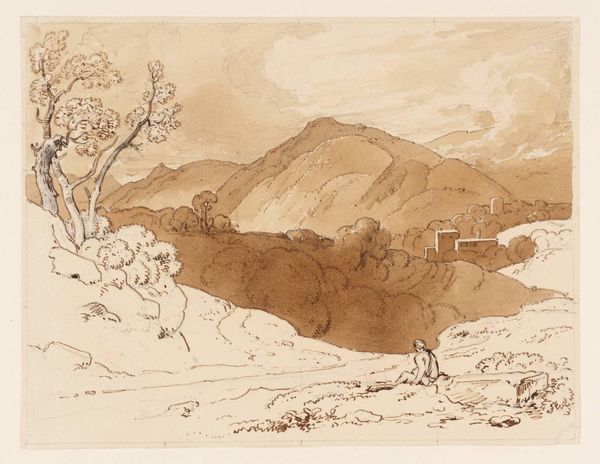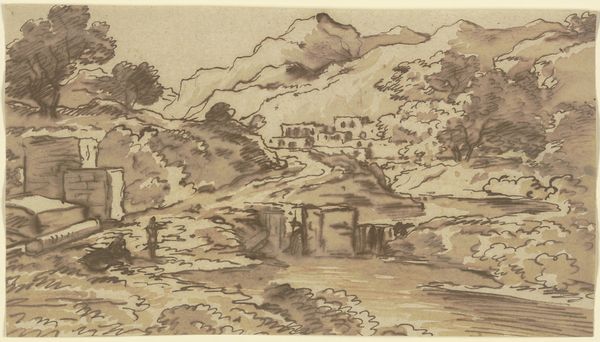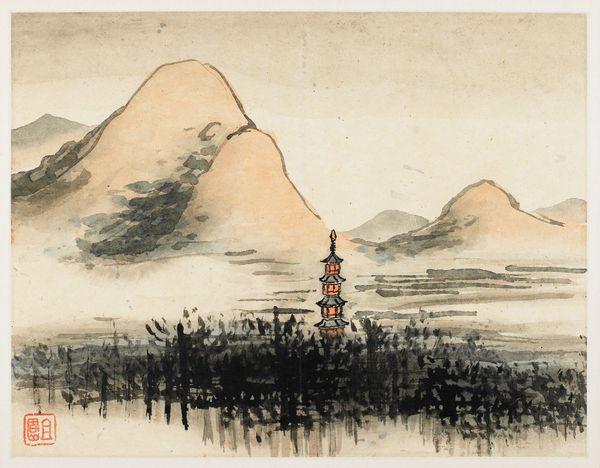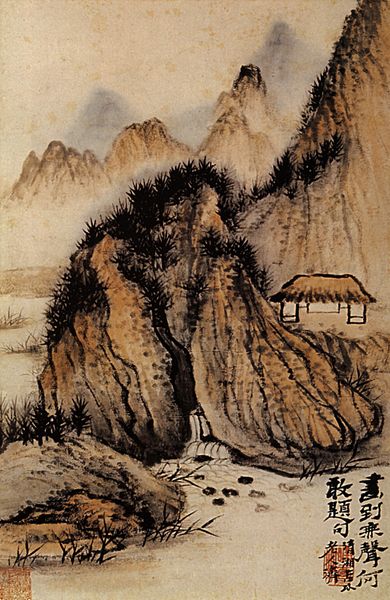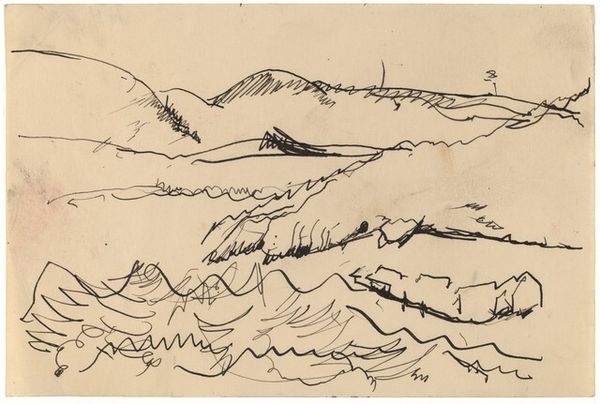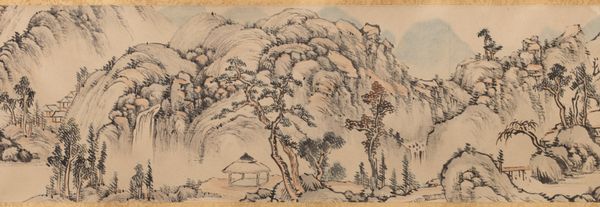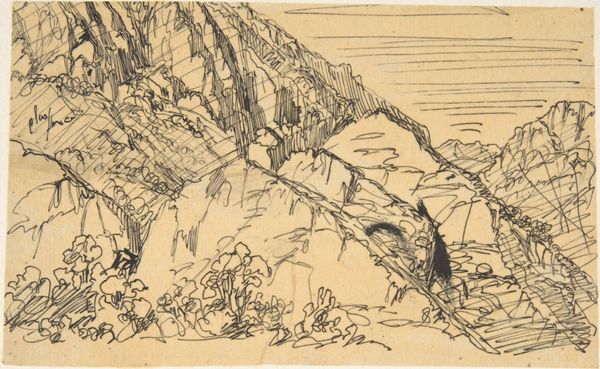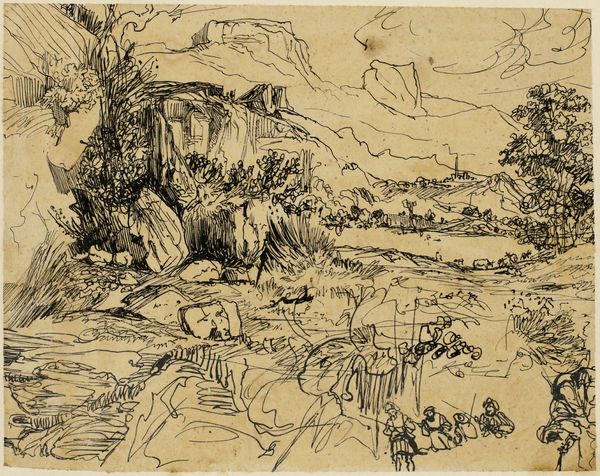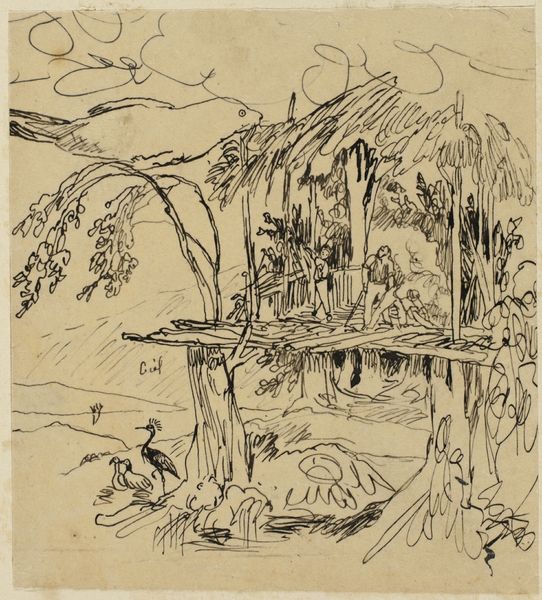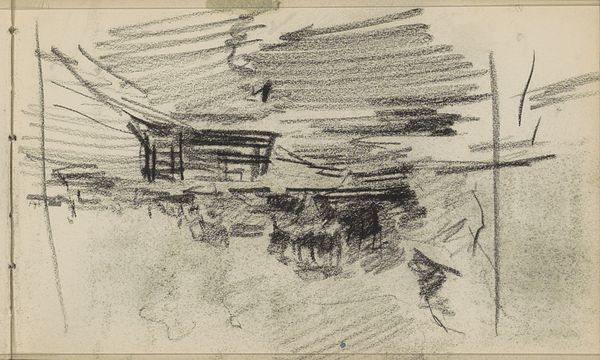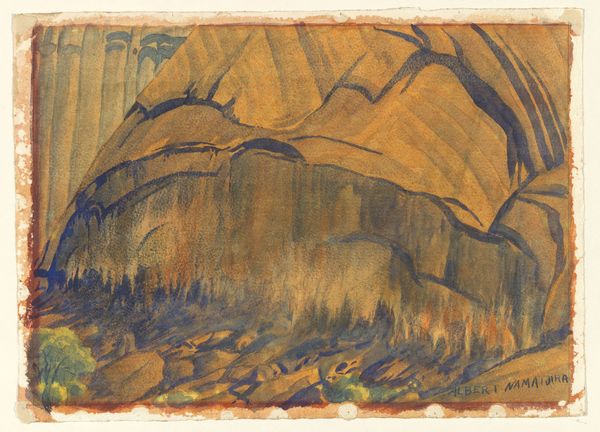
painting, paper, fresco, ink
#
ink painting
#
painting
#
asian-art
#
landscape
#
paper
#
fresco
#
ink
#
china
#
watercolor
Copyright: Public Domain
Editor: So this is Gao Qipei’s "Finger Painting," created in 1684. It’s an ink painting on paper, and there's such a unique sense of depth. I’m fascinated by the delicate details and the almost dreamlike quality of the scene. What's your take on this, and what kind of context is important here? Curator: The very title draws our attention. Qipei bucked conventions by employing the then-unorthodox finger painting technique. We must consider this work in terms of artistic institutions of the time, such as the formal painting academies, to fully understand its initial reception. Would such a technique threaten established workshops or styles? Is this painting a direct political or artistic statement against them? Editor: So, the choice of method, and what institutions were in play then? Curator: Precisely! It suggests an artist actively choosing a method outside the conventional artistic power structures of his day. Further, its embrace within collections such as this, many years later, suggests how ideas around unconventionality can change, that artistic transgression can be absorbed into, even celebrated by the art establishment. How does seeing this through that lens shift your perception? Editor: That’s so interesting. It’s almost like seeing an act of rebellion memorialized within a museum context. What does it mean for the work to gain acclaim centuries later, losing some of that revolutionary nature in the process? Curator: A fantastic question! Perhaps museums have a habit of domesticating art? It underscores how context and institutional power significantly shape how we appreciate art throughout history. We must also examine contemporary critiques. Editor: It’s given me so much to think about in terms of who gets to define “art” and how that definition shifts over time. Curator: Exactly. Seeing art as shaped by the institutions around it and by the art historical narratives helps us appreciate its complex relationship with power, tradition, and artistic innovation.
Comments
No comments
Be the first to comment and join the conversation on the ultimate creative platform.
